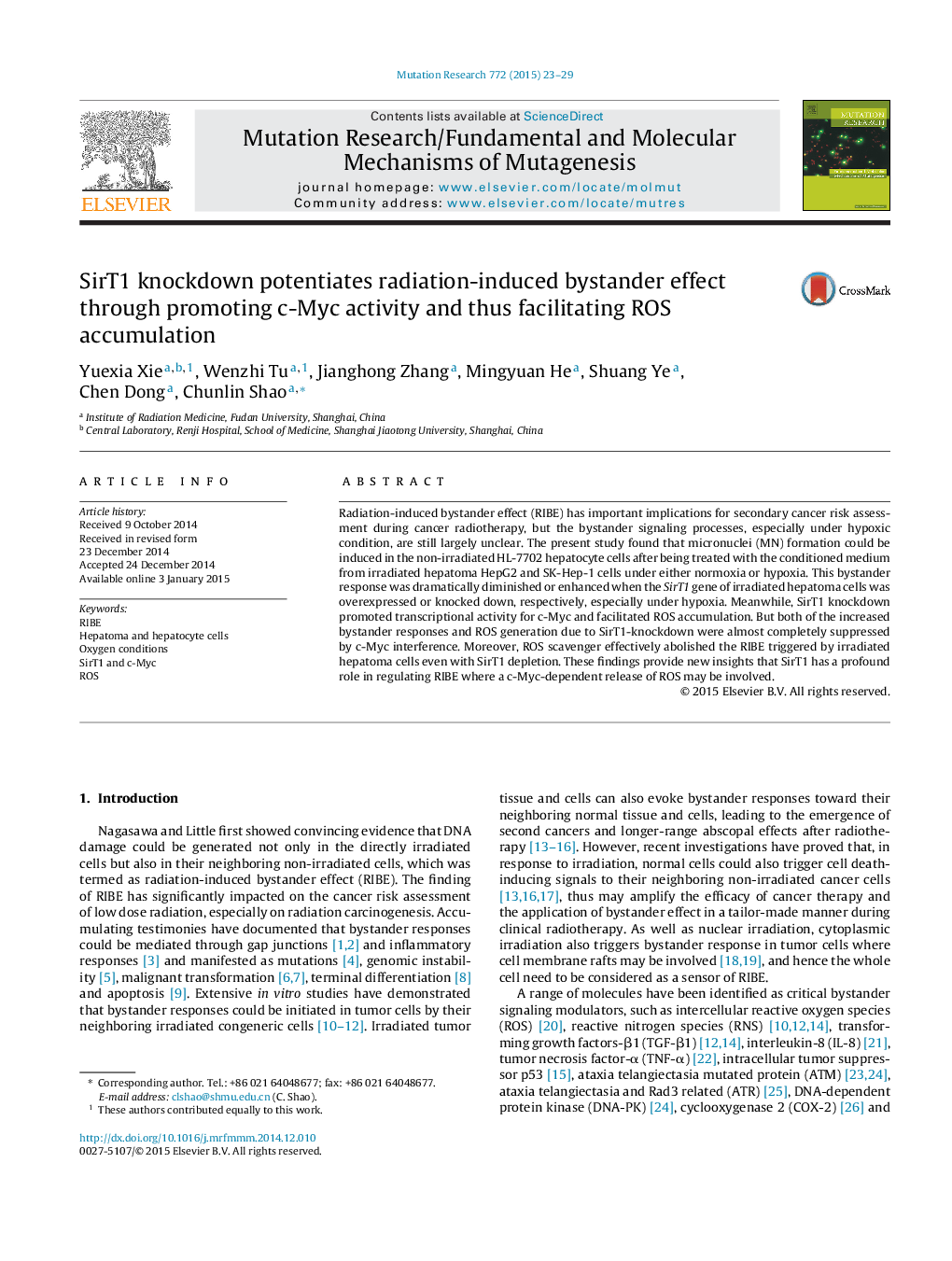| Article ID | Journal | Published Year | Pages | File Type |
|---|---|---|---|---|
| 8455752 | Mutation Research/Fundamental and Molecular Mechanisms of Mutagenesis | 2015 | 7 Pages |
Abstract
Radiation-induced bystander effect (RIBE) has important implications for secondary cancer risk assessment during cancer radiotherapy, but the bystander signaling processes, especially under hypoxic condition, are still largely unclear. The present study found that micronuclei (MN) formation could be induced in the non-irradiated HL-7702 hepatocyte cells after being treated with the conditioned medium from irradiated hepatoma HepG2 and SK-Hep-1 cells under either normoxia or hypoxia. This bystander response was dramatically diminished or enhanced when the SirT1 gene of irradiated hepatoma cells was overexpressed or knocked down, respectively, especially under hypoxia. Meanwhile, SirT1 knockdown promoted transcriptional activity for c-Myc and facilitated ROS accumulation. But both of the increased bystander responses and ROS generation due to SirT1-knockdown were almost completely suppressed by c-Myc interference. Moreover, ROS scavenger effectively abolished the RIBE triggered by irradiated hepatoma cells even with SirT1 depletion. These findings provide new insights that SirT1 has a profound role in regulating RIBE where a c-Myc-dependent release of ROS may be involved.
Keywords
Related Topics
Life Sciences
Biochemistry, Genetics and Molecular Biology
Cancer Research
Authors
Yuexia Xie, Wenzhi Tu, Jianghong Zhang, Mingyuan He, Shuang Ye, Chen Dong, Chunlin Shao,
